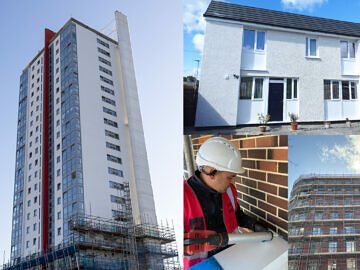In the realm of construction, cladding serves not only as a protective shield but also contributes significantly to a building’s aesthetic appeal. However, like any component, cladding is susceptible to wear and tear over time.
Here we explore common signs of cladding issues and the critical importance of prompt intervention to prevent extensive damage.
1. Discolouration and Staining:
One of the earliest indicators of cladding problems is discoloration or staining. If you notice unusual hues or spots on the surface, it may signify water infiltration, which can lead to more severe issues if left unaddressed.
2. Peeling or Bubbling Paint:
The paint on cladding should adhere smoothly to the surface. Peeling or bubbling paint suggests underlying issues, potentially water damage or poor adhesion. This warrants a closer inspection to identify the root cause.
3. Warping and Distortion:
Cladding should maintain its structural integrity. If you observe warping or distortion, it could be a sign of moisture infiltration or underlying structural problems. Timely assessment and intervention are crucial to prevent further damage.
4. Mould and Mildew Growth:
Mould and mildew thrive in damp environments, making them unwelcome guests on cladding. The presence of these organisms indicates excessive moisture and poor ventilation. Addressing the root cause is imperative to prevent further deterioration.
5. Visible Gaps or Openings:
Well-installed cladding should have no visible gaps or openings. If you observe separations or openings between cladding panels, it could compromise the building’s integrity. Immediate attention is necessary to prevent water infiltration and further damage.
When to Consider Recladding
Hamilton Building Contractors emphasises that recognising signs of cladding issues early on is essential for proactive maintenance. However, there are instances where recladding becomes the most viable solution:
Extensive Damage: If the cladding issues have progressed significantly, recladding may be the most effective way to address the damage and restore the building’s integrity.
Outdated Materials: If the existing cladding materials are outdated or no longer meet current standards, considering recladding with modern, durable materials may be a wise investment.
Energy Efficiency Concerns: Older cladding may contribute to poor energy efficiency. Recladding with more energy-efficient materials can improve insulation and reduce energy costs.
Regular inspections, timely maintenance, and, when necessary, recladding can safeguard buildings and enhance their longevity. Remember, proactive intervention today can save significant costs and headaches in the future.



